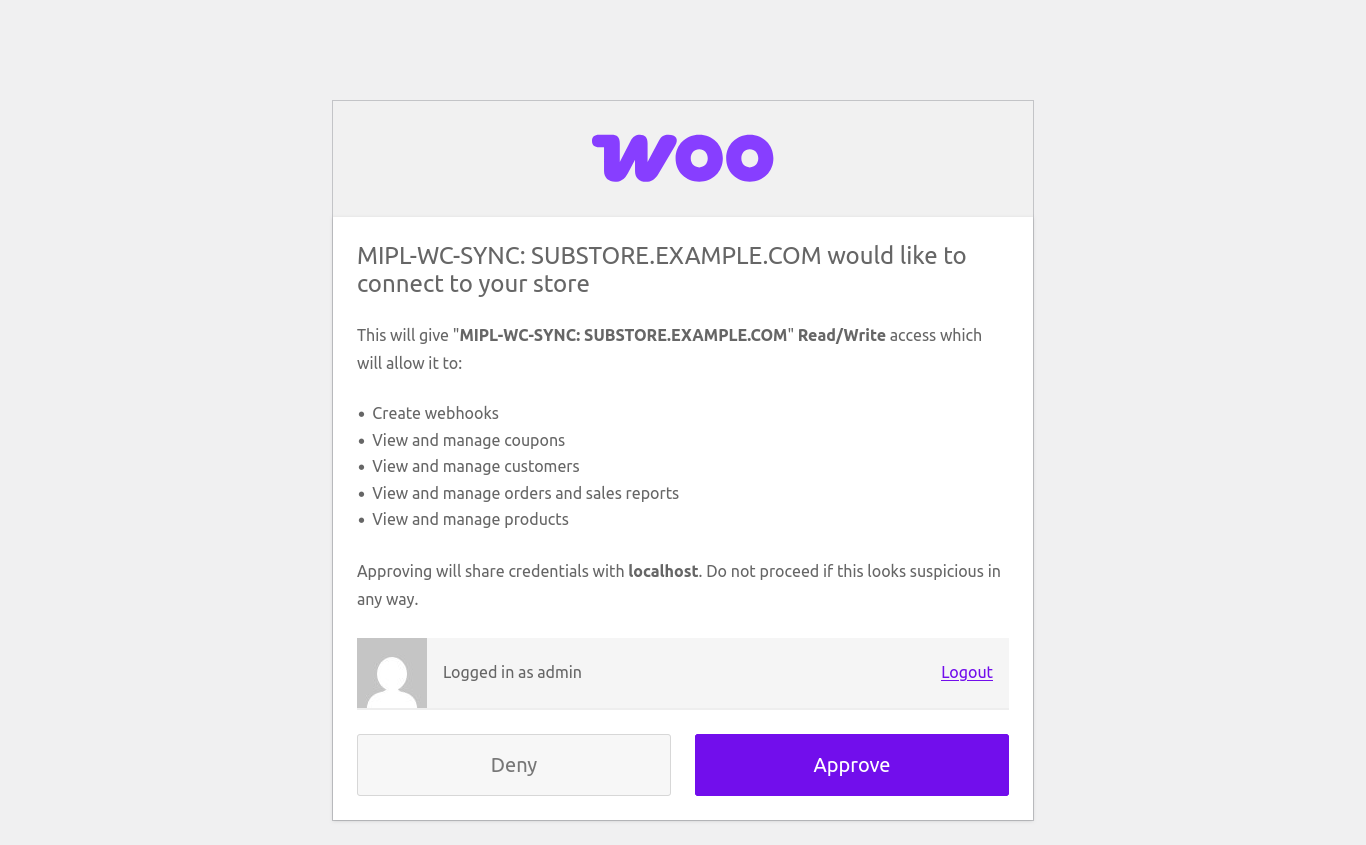By following these steps, you can seamlessly integrate and configure WooCommerce synchronization for efficient and secure data management.
Install Plugin
Kindly install the WooCommerce Multisite Synchronization plugin on the main site from the WordPress Plugin Directory, accessible at https://wordpress.org/plugins/mipl-wc-multisite-sync/. It is not necessary to install the plugin on the sub-sites.

Database Backup:
Before initiating synchronization, it is advisable to take a database backup to facilitate easy restoration if needed.

Obtain API Key for Sub-Store:
Enter the sub-store URL and click the “Connect” button. You will be redirected to the approval page.

Upon approval, the API key will be generated and stored on the main site. The synchronization of data between sites will commence.

API Key Setup Completed:
With the API keys in place, the sites are ready to commence data synchronization.

Configure Sync Settings:
Update settings according to your requirements. Customize the synchronization to include specific data types such as products, orders, coupons, etc.

Sync Log:
Enable logging to monitor the synchronized data. This provides insights into the synchronization process.

Product Sync:
On the product edit page, initiate synchronization after making updates. Choose to sync the entire product data or only the stock information.

View Synced Orders:
Track synchronized orders from the sub-site using reference IDs.

 Mulika Store
Mulika Store